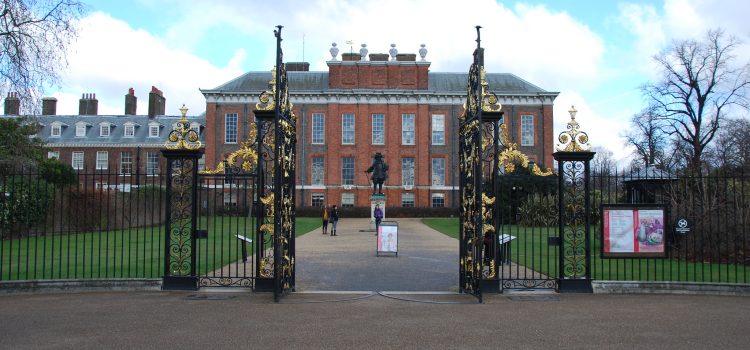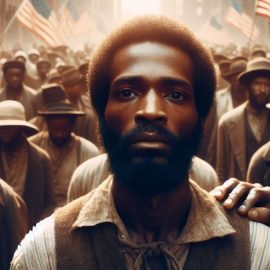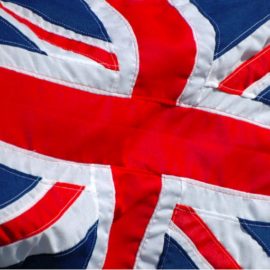
What really happened behind the palace walls during Princess Diana’s tumultuous royal life? What drove the People’s Princess to make choices that ultimately contributed to her tragic end?
In Diana, former royal protection officer Ken Wharfe reveals intimate details about Diana’s private struggles, romantic relationships, and her quest for independence. His unique position as her trusted confidant provides a firsthand account of the Princess’s life.
Read more to get Ken Wharfe’s unique take on a complex woman determined to chart her own course, regardless of the consequences.
Image credit: Geoff Livingston (License)
Ken Wharfe’s Insights Into Princess Diana
Ken Wharfe served as Princess Diana’s protection officer, and he developed a deep bond with her that went beyond his official duties. His unique position allowed him to witness firsthand the challenges Diana faced as she struggled to maintain her royal responsibilities while her marriage deteriorated.
The relationship between Ken Wharfe and Princess Diana was built on mutual understanding and trust. Early in their professional association, Diana began confiding in him about her personal struggles, particularly regarding Prince Charles’s infidelity and the feelings of loneliness and neglect that followed. A pivotal moment occurred during a holiday in Majorca, where Diana shared her deep concerns about Charles’s ongoing romantic relationship with Camilla Parker Bowles. This conversation opened the door for many future confidential discussions between them.
Wharfe recalls specific instances when Diana turned to him for support, such as when she faced the Queen’s disapproval of her work with AIDS charities, or when she felt humiliated by her husband’s behavior at an event hosted by Camilla’s sister. Through these narratives, Wharfe portrays the journey of a woman searching for authentic connections while navigating the complex and often hostile dynamics of royal family life.
Diana’s Relationship With James Hewitt
During a challenging period with Charles, Diana found comfort in her relationship with cavalry officer James Hewitt. Ken Wharfe demonstrates intimate knowledge of their clandestine affair, having helped maintain its secrecy by arranging private meeting places and managing her discreet travel arrangements. Wharfe portrays Hewitt as charismatic and cooperative, someone who fully understood the importance of discretion. Yet, while the relationship was marked by passionate moments, Diana became increasingly frustrated by Hewitt’s growing emotional demands. Wharfe views this affair as evidence of both the fundamental problems in Diana’s marriage and her desperate search for emotional connection.
Diana’s Obsession With Oliver Hoare
Wharfe describes the Princess’s obsession with Oliver Hoare, a prominent figure in the art world, as a destructive infatuation that grew beyond control. He details how Diana’s fixation manifested through countless phone calls and relentless attempts to secure Hoare’s attention. Unlike James Hewitt, Hoare showed little interest in handling the responsibilities that Wharfe found himself managing in this situation. Wharfe repeatedly cautioned Diana about the consequences of pursuing a married man, but his warnings went unheeded.
The intensity of her obsession, reflected in her persistent phone calls, ultimately led to Hoare’s wife reporting the harassment to the police—an event Wharfe characterizes as deeply embarrassing. Wharfe sees this obsessive behavior as symptomatic of Diana’s emotional turmoil during her marriage’s collapse. Despite the negative press coverage and surrounding chaos her actions generated, Diana appeared unmoved by the consequences.
Royal Criticism for Diana’s Philanthropic Work
Ken Wharfe explains that Diana’s distinctive approach to charitable work created tension within the royal establishment, as it challenged the monarchy’s traditional image. According to his observations, both the Queen and members of Prince Charles’s inner circle disapproved of Diana’s dedicated support for AIDS patients. Nevertheless, Diana remained resolute in her philanthropic work, addressing sensitive issues with courage and confronting controversial subjects head-on. Her commitment to helping the homeless and her campaign against land mines demonstrated her determination to create meaningful change, regardless of personal cost.
Diana’s Longing for Privacy
The book frequently explores Diana’s yearning for a normal existence away from the public eye. It details her sometimes impulsive decisions that put her safety at risk, such as when she leaped from a hotel balcony in Lech, Austria. Wharfe argues that this reckless act stemmed from her desperate need to escape the constant surveillance that came with her royal status.
The Unraveling of Diana and Charles’s Marriage
The book examines the breakdown of Diana’s marriage to Prince Charles and her quest to create a new identity beyond the royal establishment. Wharfe contends that Diana’s actions were driven not merely by malice or ambition, but by a genuine yearning for independence and self-sufficiency.
A turning point in both public perception and Diana’s private life came with the publication of Andrew Morton’s Diana: Her True Story. Though Ken Wharfe was unaware of Diana’s secret involvement with the book, he sensed she was undertaking a dangerous venture during its creation. Diana was determined to expose the reality of her troubled marriage and sought recognition of her suffering from the royal family. The book’s revelations about Charles’s infidelity and Diana’s struggles with bulimia and depression not only damaged the Prince’s reputation but also challenged the royal family’s carefully maintained public image.
Diana’s Quest for Self-Identity and Independence
Ken Wharfe characterizes the post-separation period as a time of significant personal growth for Diana. She was determined to forge her own path in life, independent of both her husband’s influence and the monarchy’s constraints. However, her efforts to develop an individual identity conflicted with her royal obligations, creating tension with the palace establishment. According to Wharfe, royal officials attempted to control Diana’s public image and curtail her independence by limiting her appearances at public events and removing her name from the Court Circular. These restrictive measures only intensified her determination to achieve autonomy.
As Wharfe describes, Diana envisioned dissolving her marriage to Prince Charles and creating a life independent from the royal institution. As her discomfort with royal obligations intensified, she sought to forge a new path focused on charitable work and personal aspirations. Wharfe maintains that Diana viewed herself as a champion of the people, seeking a role that would transcend the limitations of her aristocratic background.
Diana’s Death
Ken Wharfe argues that Diana’s determination to break free from the “system” ultimately contributed to her tragic and premature death. Her increasing disregard for security protocols became the main factor that ended their professional relationship. According to Wharfe, the fatal incident in Paris might have been prevented if Diana had kept her police protection. He maintains that her pursuit of independence, particularly her decision to reject Scotland Yard’s security detail, initiated a sequence of events that led to her untimely death.






